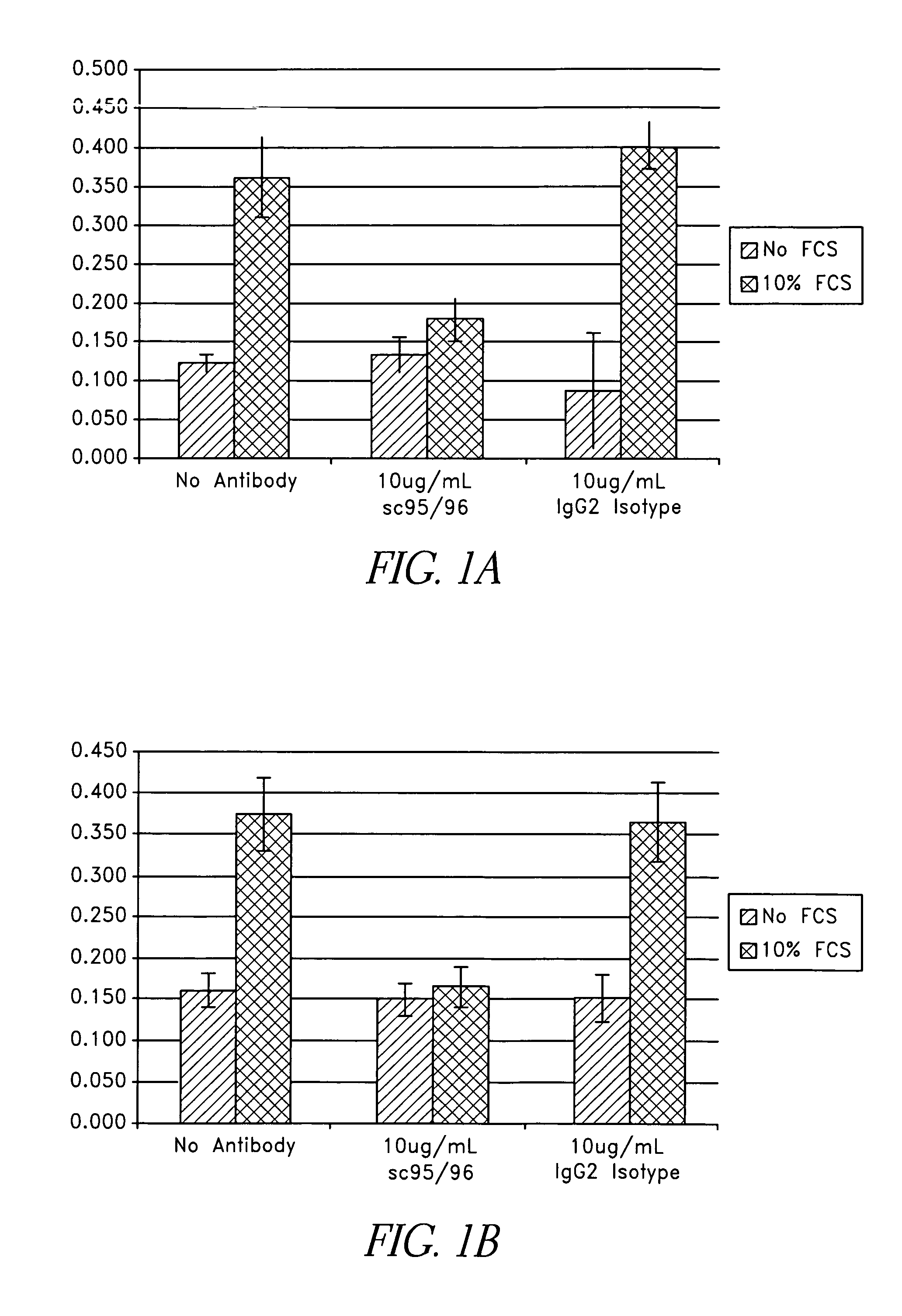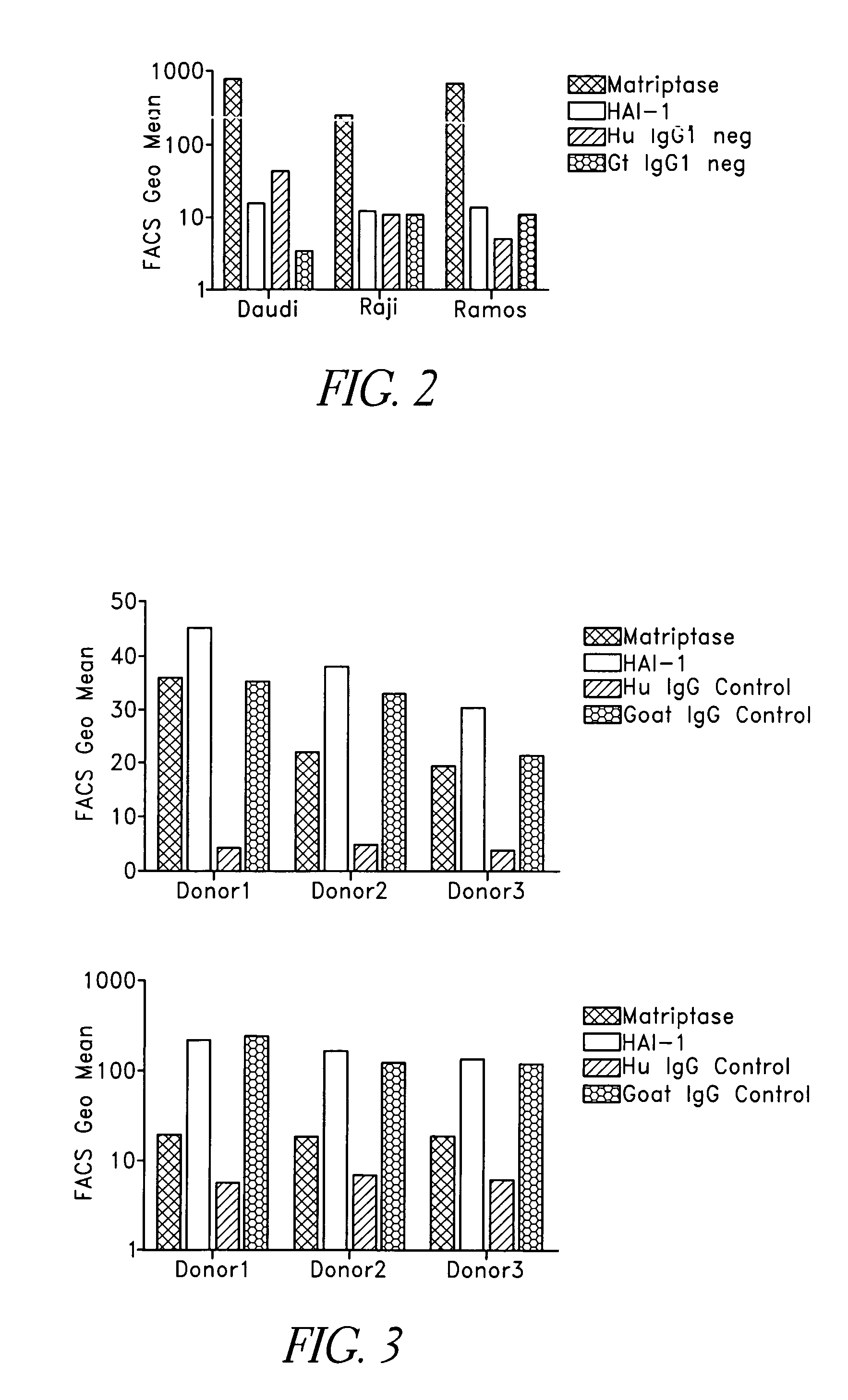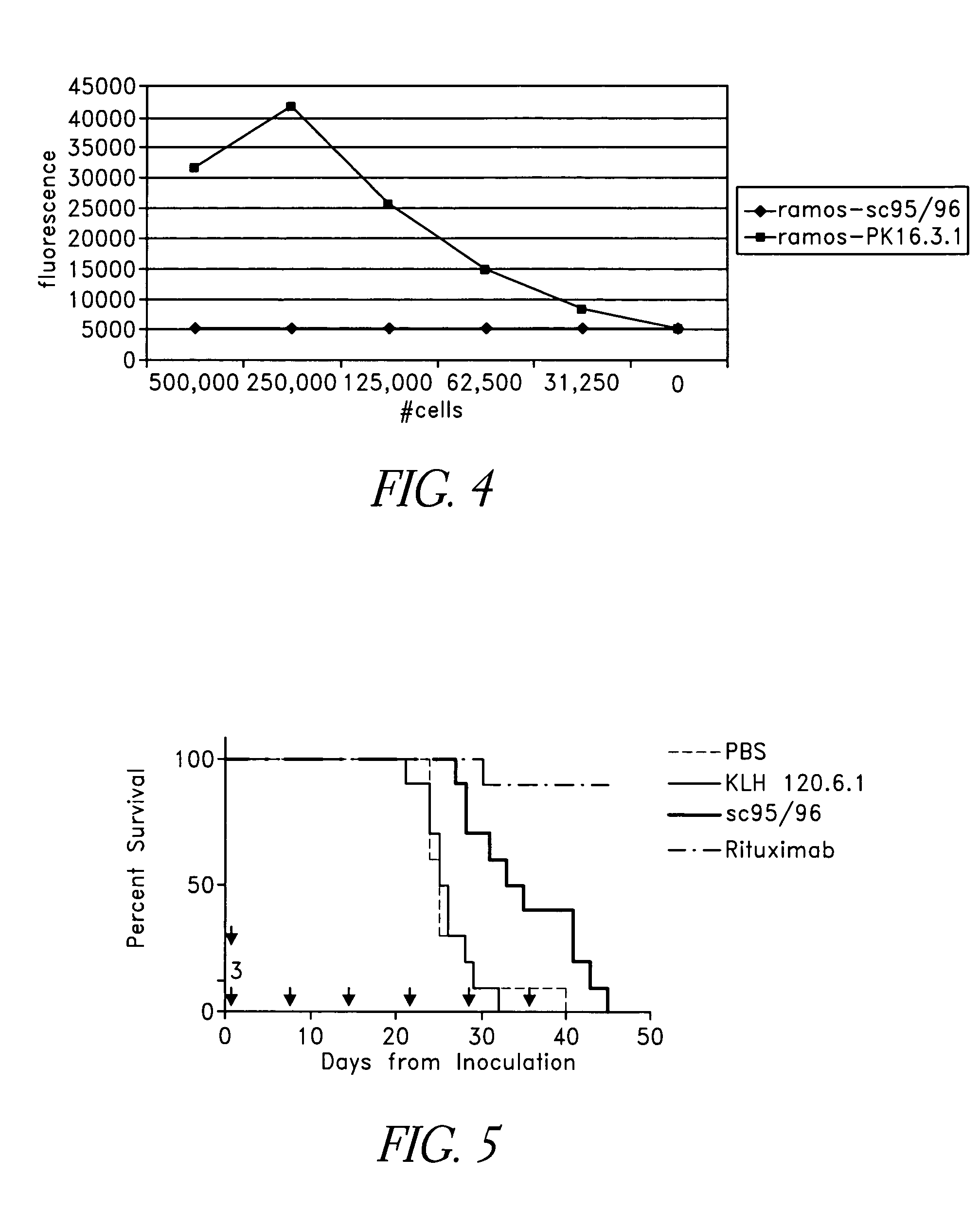Binding proteins specific for human matriptase
a technology of binding proteins and matriptase, which is applied in the field of binding proteins, can solve the problems of human immunogenicity and unsatisfactory toxicity, and achieve the effects of slowing down the clearance of antibodies from the body, enhancing the ability of fixing complement, and altering the clearance from the body
- Summary
- Abstract
- Description
- Claims
- Application Information
AI Technical Summary
Benefits of technology
Problems solved by technology
Method used
Image
Examples
example 1
Immunization with Matriptase
[0135]Soluble protein containing the Matriptase catalytic domain (SEQ ID NO: 2), which corresponds to amino acids 615-855 of the Matriptase protein (SEQ ID NO: 1) was used as the antigen. XENOMOUSE® strains of animals (XENOMOUSE® strain XMG2 / kappa, Abgenix, Inc. Fremont, Calif.) were immunized 10 times before harvest. The first six immunizations were performed using CpG / Alum as the adjuvant, and the site of immunization alternated between intraperitoneal cavity (IP) and base of tail (BoT). After six immunizations, the animals were titered to assess the immune response to the antigen. To improve the titers, four addition boosts were performed. The 7th immunization and the 9th immunization were performed using TiterMax Gold (CytRx Corporation, Noreross, Ga.) as the adjuvant (IP); the 8th immunization was performed using CpG / Alum as the adjuvant (BoT) and the 10th minimization was performed in PBS (BoT). The immunizations were administered on day 0, 4, 8, 11...
example 2
Selection of Animals for Harvest
[0136]Antigen-specific antibody titers for each of the XenoMice were determined by ELISA. ELISA plates were prepared by coating Streptavidin-labeled 96-well plates (Corning, Acton, Mass.) with the biotinylated catalytic domain of Matriptase.
[0137]The following method was used to prepare the biotinylated antigen. The catalytic domain of Matriptase (150 μg) was buffer changed into 50 mM sodium bicarbonate pH 8.5 by washing three times in a 5 kDa spin column. The protein was brought up to 1 mL in 50 mM sodium bicarbonate pH 8.5 containing 120 μpg of Biotin-X-NHS (biotinamidocaproate N-hydroxysuccinimide ester) and allowed to rotate for 1 hour at room temperature. The reaction was stopped by washing the sample three times in a buffer containing 150 mM sodium chloride and 50 mM HEPES, pH 6.5 in a 5 kDa spin column. After washing, the biotinylated protein sample was resuspended at a concentration of 300 μg / mL in the buffer described above.
[0138]The solution...
example 3
Preparation and Screening of B Cell Cultures
[0141]Culture of B cells. CD19+ / CD138− B cells were isolated from the draining lymph nodes of the hyperimmune animals. The cells were cultured to allow them to proliferate and terminally differentiate into antibody-secreting plasma cells. Forty 96-well culture plates were set-up at 50 and 150 CD19+ / CD138− B cells per well.
[0142]Screening of the B cell culture supernatants. The supernatants from the B cell cultures were analyzed for the presence of antigen-specific antibody using ELISA. ELISA was performed as described above in Example 2 on every well in order to identify wells having antigen-specific antibodies. This led to the identification of 972 wells with optical densities above background levels. These supernatants were selected for further analysis.
[0143]All 972 wells were then analyzed in an enzymatic assay using the catalytic domain of Matriptase and the tripeptide QAR-MCA (Peptides International Inc., Louisville, Ky.) as substrat...
PUM
| Property | Measurement | Unit |
|---|---|---|
| dissociation constant | aaaaa | aaaaa |
| dissociation constant | aaaaa | aaaaa |
| dissociation constant | aaaaa | aaaaa |
Abstract
Description
Claims
Application Information
 Login to View More
Login to View More - R&D
- Intellectual Property
- Life Sciences
- Materials
- Tech Scout
- Unparalleled Data Quality
- Higher Quality Content
- 60% Fewer Hallucinations
Browse by: Latest US Patents, China's latest patents, Technical Efficacy Thesaurus, Application Domain, Technology Topic, Popular Technical Reports.
© 2025 PatSnap. All rights reserved.Legal|Privacy policy|Modern Slavery Act Transparency Statement|Sitemap|About US| Contact US: help@patsnap.com



